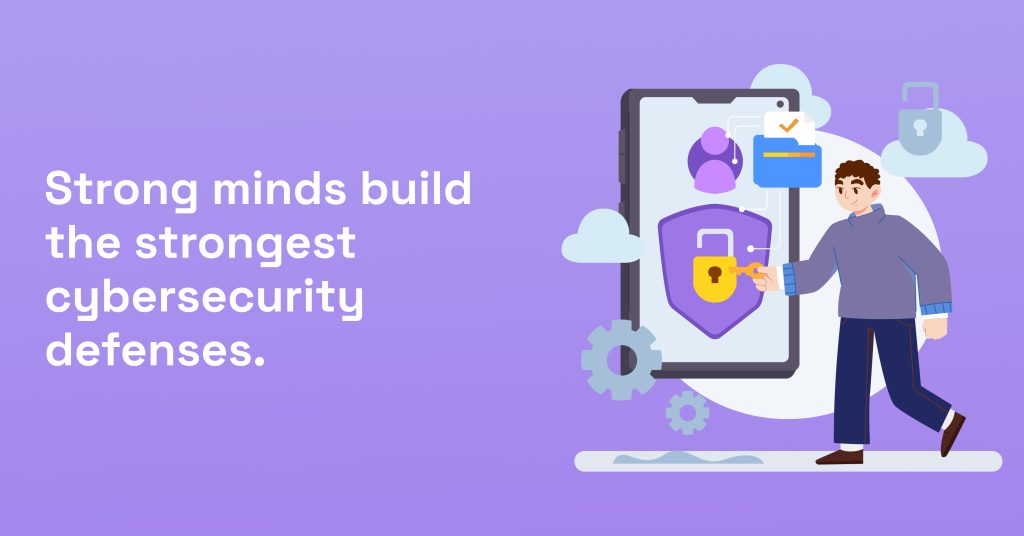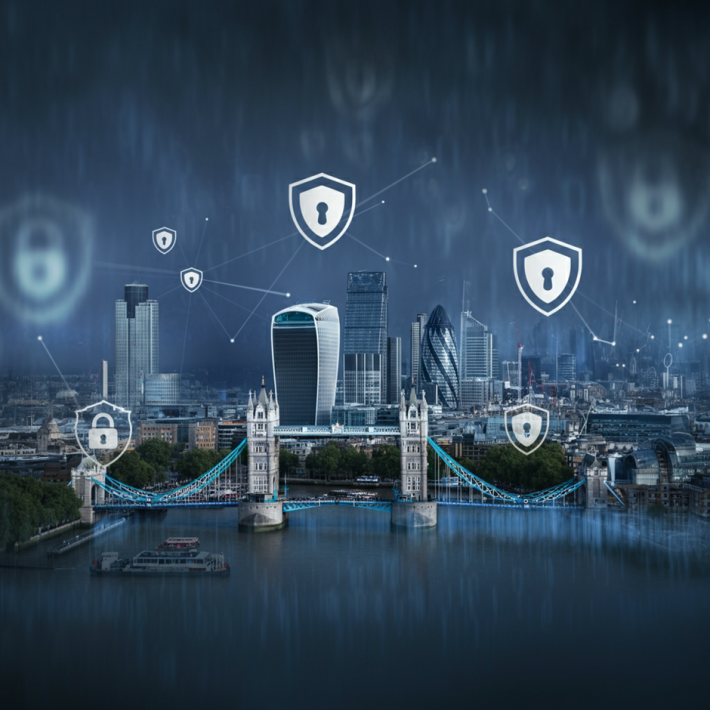The Facts that You Should Not Missabout Cybersecurity and Human Behavior

I received a WhatsApp message from a colleague a few years ago, requesting some client files. It was informal and persuasive. The profile picture was a match, the tone seemed natural, and I was just a click away from sending it. But something caught my attention, and my inner self emits vibes of something concealed that I’m not quite able to determine at the moment. I double-checked, and sure enough, it was a smishing attack. On that day, I realized that cybersecurity is not all about firewalls. It’s about human nature. That’s what behavioral conditioning in cybersecurity is all about. Conditioning the human mind to stop, check, and be careful in digital contexts. And the more we ignore it, the more we expose ourselves to contemporary digital pitfalls such as phishing, smishing, vishing, and even malvertising.
What is Behavioral Conditioning in Cybersecurity?
Imagine it this way: whenever you click on a link, reply to a message, or type login information, you’re executing a habit loop. That’s what cybercriminals understand. They’re no longer just counting on technical exploits. They’re taking advantage of psychology. The more employees are conditioned to execute secure digital actions, the less likely attackers are to succeed. This is where security awareness training comes into play. And products such as SimuPhish enable this type of behavioral training to be effective and cost-efficient.
What makes it more concerning
Most organizations think that adding an antivirus or firewall makes them secure. But threats don’t always come bearing warnings. Sometimes, they disguise themselves as your manager or a known vendor. This is particularly the case with sophisticated strategies such as :
- Phishing: Illegal emails or messages designed to trick users into sharing sensitive information.
- Smishing: Phony texts that seem to be sent by banks or services.
- Vishing: Voice phishing calls that are simulated conversations.
- Malvertising: Hazardous advertisements on legitimate sites to spread malware.
Let’s define these properly:
- Phishing simulation: A practice exercise where employees are simulated with fake but harmless phishing attempts to educate improved responses.
- Smishing definition: Smishing exploits SMS to deceive users into opening malicious links or sharing personal information,
- Define malvertising: Malvertising is concealing malware within advertisements, usually on legitimate websites.
- Malvertising examples: Clicking an advertisement for a free program that installs spyware surreptitiously, or getting a pop-up that simulates a browser update.
Implementation is most Important
Before collaborating with simUphish, I assumed mere awareness of cybersecurity attacks sufficed. But awareness doesn’t always translate to action in the heat of the moment. When we’re stressed or in a hurry, we don’t think. We act. That’s why, only awareness can’t help; we have to implement the right measures.
simUphish made me understand that cybersecurity behaviors must be conditioned as muscles. Using open-source phishing simulation tools, we designed realistic attack scenarios. These ranged from emails to voicemails to mock-up vendor websites. The outcome was shocking. Even our best employees clicked on questionable links until they were properly conditioned
simUphish: The Game-Changer in Phishing Simulation
If you haven’t tried simUphish yet, it’s a behavior-change-focused phishing simulator. Within the field of human risk management, it’s particularly notable.
simUphish provides:
- Phishing Simulation Campaigns tailored to your industry
- Open Source Phishing Simulation tools for visibility and adaptability
- Smishing and Vishing Simulations for awareness beyond email attacks
- Malvertising Awareness Modules to assist in identifying dangerous ads
- AI-powered Feedback that offers instant learning from each simulation
The ROI of a Well-Trained Team
Based on cybersecurity studies, worldwide cybercrime is projected to cost 10.5 trillion dollars by 2025. It’s not a technology problem; it’s a people problem. The proper tools, with the proper training, provide a strong defense.
With good behavioral conditioning:
- Less staff click on fake mail and sites
- More people report suspicious activity
- Recovery times from attempted breaches are better
- Trust grows between departments
Cybersecurity is no longer everyone’s problem.
Teach before the breach
One of the most important lessons I’ve learned is that changing behavior is the most critical aspect of security. You may possess the latest technology, but if your human factor isn’t ready, your defenses are compromised.
If you’re leading a startup or directing a big team, behavioral training is the best investment you can possibly make.
Ultimately, cybersecurity is not primarily about firewalls and applications; it’s about individuals. And individuals can be conditioned.
From my own experience, behavioral conditioning of cybersecurity is the missing link that most firms ignore. Tools like simUphish help employees build reflexes that protect them from modern threats like malvertising, smishing, and deepfake scams. Running a regular phishing simulation campaign, including vishing simulations and smishing simulations, isn’t a checkbox task; it’s a necessity.
If you’re still unsure what malvertising is or need clear malvertising examples, start by revisiting your security awareness training policy. Keep in mind that phishing can be open-ended, but your security awareness training does not need to be. Whether you use an open source phishing simulator or a full-featured phishing simulator, make it authentic, make it habitual. Because if you condition first, you’d best protect.
Start simple. Execute a phishing simulation campaign this month. See how your team responds. Then create a formal program using software such as simUphish. Make it ongoing. Behavior only changes with repetition.
Ready to Train Smarter?
Your security is not just based on technology. It’s based on what your people do daily. simUphish enables your team to develop safe habits naturally and automatically. Because the most effective cybersecurity begins with people who understand how to think before clicking
FAQs
- 1. In cybersecurity, what is behavioural conditioning?In order to make safe online behaviour automatic rather than merely conscious, it teaches users to develop safe digital habits, such as pausing before clicking links.
- 2. Why can't an organisation be completely protected by technology alone (firewalls, antivirus software)?The "human link" needs to be protected as well because many attacks—such as phishing, social engineering, and malvertising—take advantage of human nature.
- 3. Phishing simulation: what is it?Employees can practise recognising and fending off phishing assaults by participating in a controlled activity that simulates them.
- 4. What distinguishes vishing and smishing from phishing?SMS/text messages are used in smishing to deceive people. Voice calls or audio-based trickery are used in vishing. Phishing is the term used to describe fraudulent emails or links.
- 5. Malvertising: What is it?It is malicious code that, when clicked or loaded, can infect users' systems. It is concealed in advertisements on trustworthy websites.
- 6. Why is training implementation more crucial than awareness-raising alone?Under stress, awareness by itself frequently doesn't alter behaviour. Responses are conditioned by training to increase the likelihood of right actions in real-world scenarios.
- 7. How frequently should awareness training and phishing simulations be conducted?Frequently—repeatedly over time—to strengthen safe practices and adjust to changing dangers.
- 7. How frequently should awareness training and phishing simulations be conducted?Frequently—repeatedly over time—to strengthen safe practices and adjust to changing dangers.
- 8. Are even seasoned or high-achieving staff members susceptible to phishing?Indeed. Anyone can click or fall under pressure or distraction if they haven't been conditioned to do so.
- 9. When teams receive behavioural training, which measures show improvements?Improved cross-team trust, quicker recovery from attacks, greater reporting of questionable information, and fewer clicks on fraudulent things.
- 10. Why is a phishing simulation considered "authentic"?Scenarios should replicate real-world communications that are pertinent to the organisation's business in terms of tone, vocabulary, and sender context.
- 11. What is the return on investment (ROI) of behavioural training?Through minimising recovery costs, decreasing successful breaches, and fortifying cybersecurity's weakest link—people.
- 12. Can only email-based assaults be simulated?No, smishing, vishing, malvertising, and hybrid attack vectors are also included in effective training.
- 13. What use do simulation tools' feedback serve?Instantaneous contextual feedback encourages appropriate replies and helps users learn from errors.
- 14. If an organisation doesn't already have a program, where should they start?Start with a basic phishing simulation, track reactions, and then grow into a systematic, continuous program.
- 15. Why is it crucial to "teach before the breach"?Because anticipatory behaviour training helps prevent many breaches in the first place, waiting for an incident to trigger training is too late.
Follow Us for More Tips
Help others stay safe too. Share this guide and follow simUphish for more real-time cybersecurity tips:
- Instagram: https://www.instagram.com/simuphish/
- Facebook: https://www.facebook.com/simuphish/
- LinkedIn: https://www.linkedin.com/company/sim-u-phish/
- Pinterest: https://www.pinterest.com/simuphish/





https://shorturl.fm/iEsH4